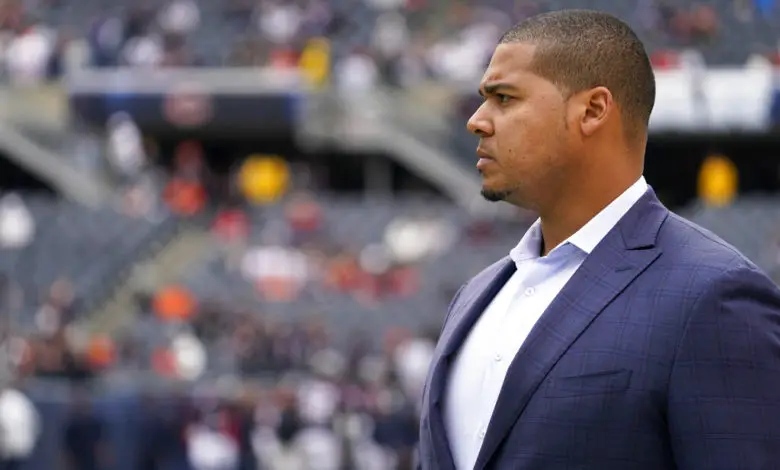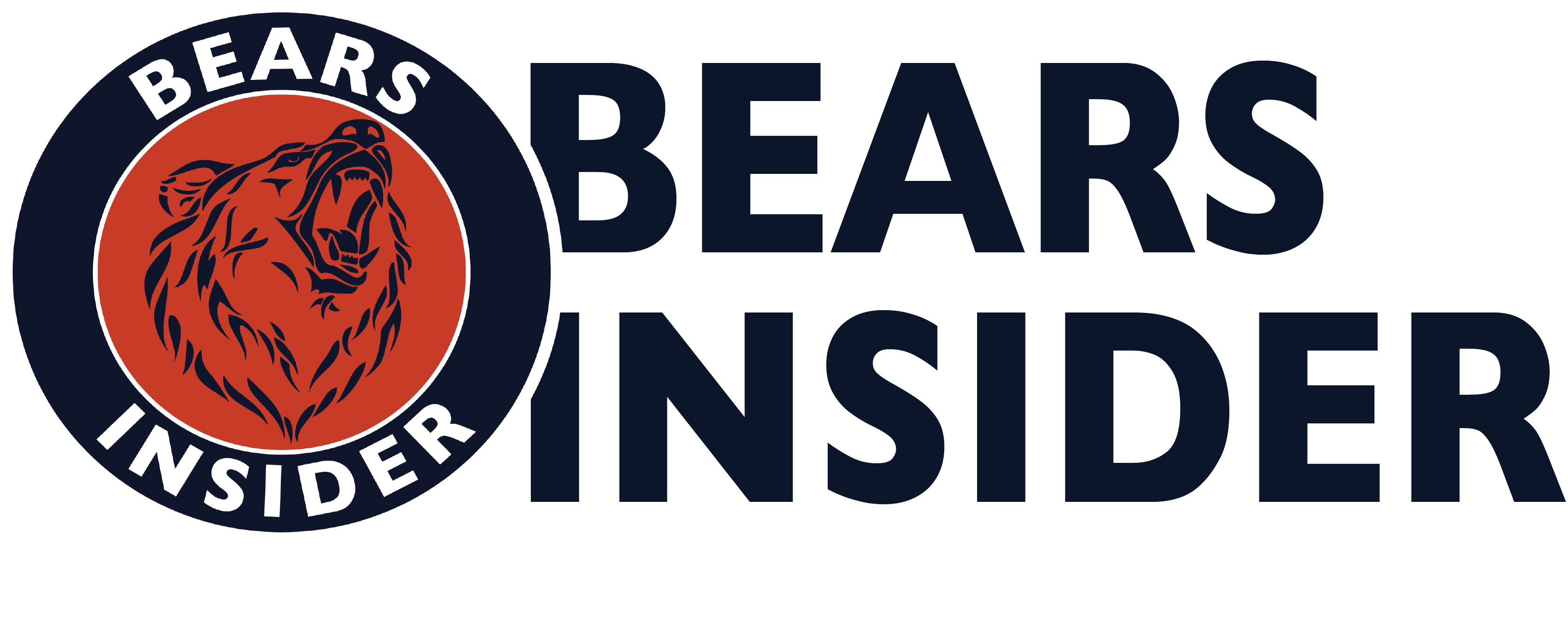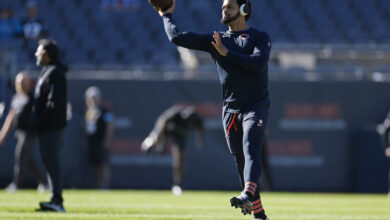
It’s Time to Separate Bear Facts from Fiction
There aren’t many fans who are as reactionary as those who root for the Bears. Change is inevitable, but in Chicago, fans demand it, and far too often. The emphasis that is put on the quarterback position borders on the ridiculous at times, and has since Jay Cutler played for the Monsters of the Midway. The debates became more heated once Ryan Pace drafted Mitchell Trubisky, and no player has been more polarizing than Justin Fields.
The Bears improved from 3-14 to 7-10 this year while losing three games with double-digit leads in the fourth quarter. They’re almost on the cusp of playoff contention despite laying an egg against the Packers in the final week of the season. Jordan Love has been on fire, something the anti-Fields faction is quick to point out.
Still, the Bears have the top pick in the draft thanks to the Panthers. GM Ryan Poles has an opportunity to extend that gift that keeps on giving should he decide to trade the top pick. If he keeps it, a very real chance exists that Poles will take one of the top four quarterbacks in this draft. I don’t see that happening, but it’s impossible to say for sure.
With that in mind, let’s go through some of the hottest rumors among Bears fans.
The Bears Can’t Win a Super Bowl With Fields at Quarterback
Nothing could be further from the truth, and in fact, the six worst quarterbacks to lead their team to the Lombardi Trophy were below average, and that’s being kind.
- Joe Namath (62-63-4) – He played 13 seasons in the AFL and NFL (all but the final one for the Jets) and had more TDs than INTs in a season just twice. He had a career completion percentage of 51% and threw more INTs than TDs in his MVP season (1968).
- Nick Foles (29-29-0) – The journeyman has played for six teams including the Bears and had two stints with the Eagles. Foles has a quarterback rating of 50 or below in seven of his 11 NFL seasons, and he’s never been a full-time starter despite winning MVP in 2013. He did beat Tom Brady in Super Bowl LII, however.
- Jeff Hostetler (51-32) and Brad Johnson (72-53-0) – Let’s be honest: You forgot these two ever played in the NFL, yet both have more rings than Dan Marino and as many as Brett Favre and Aaron Rodgers.
- Doug Williams (38-42-1) – You can make a case that Williams is the worst QB to win a Super Bowl. His career completion percentage is 49.5% and he was 0-2 as a starter in the regular season when Washington won Super Bowl XXII in a 42-10 blowout of the Broncos. Yet Williams had one of the greatest Super Bowls ever played, going 18-29 with 340 yards (a record at the time) and 4 TDs. In the second quarter alone, he went 9-11 for 228, and all of those TDs.
- Trent Dilfer (58-55-0) – As a quarterback, Dilfer makes one hell of an analyst. He was a game manager who rode a historically good defense to a Super Bowl XXXV win in his only season with the Ravens. Dilfer finished his career with 129 interceptions against 113 scores and was sacked 263 times in 113 starts.
The Bears Will/Won’t Trade Fields Ahead of This Year’s Draft
I was told Justin Fields holds the ball too long and has a ball security issue… 🤔pic.twitter.com/GZehFFTDGL
— Justin Fields Fan Club (@JustinFieldsFC) January 20, 2024
Depending on which group of fans you talk to, a Fields trade is either off the table or a virtual given. It’s much more complicated than that, and it’s almost certain that Ryan Poles hasn’t decided. If you listened to his post-season presser, Chicago’s GM gave Fields a whopping four votes of confidence but remained non-committal. That’s probably by design, however. There is no way Poles is going to give up any leverage he has in trading Fields or his No. 1 pick.
“I did think Justin got better,” Poles said at the end of the season. “I think he can lead this team. But at the same time, there’s a unique situation where I have to look and our staff has to look at everything, and that’s exactly what we’re going to do. And that’s the same with free agency. We’re going to look at our free agents, [involve] my staff, do evaluations, and again, make the best decision we can for this organization to take the next step.”
“I’ve got to stay open-minded about it,” Poles continued. “Not to use the same quote, but when I say, ‘I need to be blown away,’ it’s the same [as last year] because seeing the things that Justin did this year, his ability to make plays … keeping his eyes down the field, taking [fewer] sacks, you see a lot of growth there where he can continue to get better. So I’ll have the same mindset.”
You can count on three things from Poles this offseason whether they become headlines or not:
- He will gauge what type of extension Fields may be looking for. Poles won’t swim out of his lane when it comes to player valuation, and Roquan Smith is a perfect example. If Fields is unwilling to meet Poles’ number, he will be shopped.
- The executive possesses a very analytical mindset while making decisions. The draft is a crapshoot, and the position with the greatest volatility is quarterback. Draft results are sobering at best, and only 30% of drafted players make 53-man rosters. Only 20.2% of all players drafted from 2016-2020 have been multi-year starters. Another 6.9% earned a second contract with the team that originally drafted them. How many “generational players,” the label often attached to Williams, were drafted? The number would be six by my count and each of the following players has a Hall of Fame trajectory: Myles Garrett (No. 1, 2017), Patrick Mahomes (No. 10, 2017). T.J. Watt (No. 30, 2017), Lamar Jackson (No. 32, 2018), Nick Bosa (No. 2, 2019), and Justin Jefferson (No. 22, 2020).
- The number of first-round quarterback busts is alarming. Those players include Trubisky, Trey Lance, Sam Darnold, Ryan Leaf, JaMarcus Russell, Matt Leinart, Carson Wentz, Johnny Manziel, Vince Young, Robert Griffin III, Sam Bradford, Brady Quinn, and Rick Mirer.
The Falcons Would Give Chicago the No. 8 Overall Pick for Fields
NEWS: The #Bears could get the 8th overall pick for Justin Fields from the #Falcons, per ESPN.
Chiacgo would then hold the 1st, 8th, & 9th overall pick in this draft.
— MLFootball (@_MLFootball) January 15, 2024
This is a false narrative according to ESPN’s Courtney Cronin.
“The consensus in an informal poll of league evaluators is that Fields would be worth a second- or third-round pick in a pre-draft trade,” Cronin reported. “When compared to former top-10 picks recently traded, that’s better than Lance, whom Dallas acquired from San Francisco for a fourth-round pick, but slightly worse than Darnold, who, along with a sixth-round pick, went from the Jets to Carolina in exchange for second- and fourth-rounders.”
If Fields was worth the No. 8 pick the decision to keep or trade him would not be up for debate.
If the Bears Extend Fields, They’ll Have No Money for Free Agent Acquisitions
The number I see most attached to Fields is $40 million per year, which seems potentially accurate. I’m not sure where that number came from but that seems to be the consensus. Jackson, Jalen Hurts, and Justin Herbert are making north of $50 million per season.
Herbert and Jackson are both in the $130 million+ in terms of the fully guaranteed part of the deal, but Jalen Hurts is around $110 million. That’s significant because the Hurts contract (or whatever the Jaguars give Trevor Lawrence) makes the most comparative sense. That said, Poles will want to be as gentle with his salary cap as possible when it comes to extending Fields.
Hurts’ cap hit for the first four seasons of his extension is less than the projected franchise tag value for his position.
- 2023 – $6.154 million vs. $31.158 million
- 2024 – $13.558 million vs. $36.3 million
- 2025 – $21.769 million vs. approximately $41 million
- 2026 – $31.772 million vs. approximately $46 million
Look for Poles to demand something similar if he extends Fields. Cap hit is calculated as all money paid to a player during the season (roster bonuses, salary, and performance bonuses), plus the signing bonus divided by the length of the contract in years.
Franchise and transition tenders are calculated by adding the respective tag numbers, dividing by the sum of the salary caps from the previous five seasons, and finally multiplying by the current season’s salary cap. Franchise tag figures are based on the top five salaries at each respective position, while transition tag figures are based on the top 10.
For what it’s worth, taking a QB at No. 1 overall would count approximately $8-$8.5 million against the salary cap (by my calculation) during the player’s 2024 season. Using last year’s trade as an example, that hit shrinks to about half that if the Bears were to move down to No. 9 or No. 10. Extending Fields would therefore provide value in Year 1 and beyond, something the “restart the rookie clock” guys fail to point out. Plus, he’s a known quantity.
Where Would Fields Rank Among This Year’s Rookie QB Class?
These are not my rankings, but rather a consensus among draft experts.
- Caleb Williams
- Drake Maye
- Fields
- Jayden Daniels
- Michael Penix Jr.
- J.J. McCarthy
A First-Round QB on a Rookie Contract is a Cheat Code
Caleb Williams is a CHEAT CODE🔥pic.twitter.com/tbgZj9QUxG
— On3 (@On3sports) September 2, 2023
If we’re not calling players like Williams and Maye “generational,” we’re calling them “cheat codes.” We can all thank the success of rookie C.J. Stroud for that. Stroud’s cheat code was working with Brady before and after the draft.
For the record, the phrase means unfairly awesome, or something so ridiculously unexpected that somebody must have programmed it into real life. None of those rookies has played a single down in the NFL. Ergo, none are cheat codes, and if I’m being forthright, none are generational talents just yet. So let’s pump the brakes a little.
The Bears Should Ask Matt Eberflus to be Defensive Coordinator
Some Bears fans think the team would be better if Poles hired someone like Bill Belechik or Jim Harbaugh while asking Eberflus to take a coordinator position. There is no world where that is remotely possible. A new head coach would demand his own staff. It’s also a 100% certainty that Eberfuls would not accept a demotion. Turn in your football card and refrain from commentary if you believe Eberflus would/should acquiesce to that type of request.
Coordinators Will Not Come to Chicago Unless Eberflus is Extended
IMO the most important decision the #Bears will make this offseason is who they hire as the next OC.
— Jerry Azumah (@JerryAzumah) January 18, 2024
The Bears need an offensive and defensive coordinator after Alan Williams stepped down and Luke Getsy was dismissed. Eberflus is entering Year 3 of his four-year deal and is not the lame duck head coach social media wants you to believe he is. Could he get fired after the upcoming season? Of course, he could, but every head coach has that hanging over his head. Eberflus is more likely to get an extension if he continues to show improvement.
The average tenure of a coordinator is 1.2 seasons and most are signed to one-year deals anyway. Half of the league had first-year coordinators in 2023 and another nine had coordinators entering their second seasons. Their average salaries are about $1 million per year.
The Bears and Eberflus should have little trouble filling those vacancies. Besides, the ultimate goal of any coordinator should be a head coaching position. A good coordinator on a bad team has the best chance of succeeding its current head coach.
Ryan Poles Controls the 2024 NFL Draft
He does indeed, just like last year. If he trades that top pick, it boosts the return he got from the Panthers last year. This year’s quarterback-needy teams include the Commanders, Patriots, Raiders, Vikings, and possibly the Buccaneers, Steelers, Falcons, and Seahawks. That means 8-10 teams are looking to draft one of the four allegedly elite quarterbacks. One would assume trading the pick provides much more value to Poles than trading Fields.
In case you forgot, last year Poles netted two first-round picks, including the No. 9 overall selection, and two second-round choices, plus star wide receiver D.J. Moore in exchange for the No. 1 overall pick.

